3DWarehouse
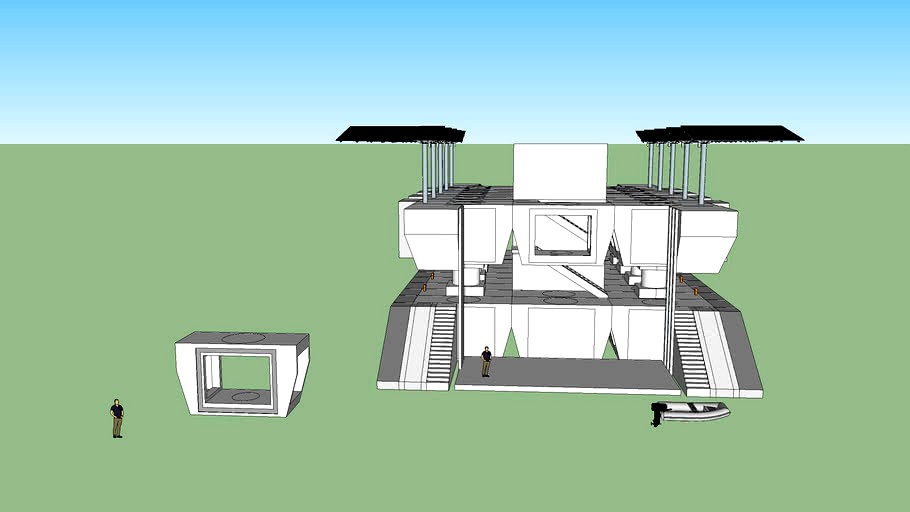
The Juggernaut SWATH: a variable draft, pre-cast, modular, extreme houseboat
by 3DWarehouse
Last crawled date: 1 year, 9 months ago
The Juggernaut is an 'extreme houseboat' conceptual design, intended to be capable of floating safely and comfortably about the San Francisco bay without ever docking at shore. This design is intended to be built from pre-cast, cement+basalt laminate components that would be held in place with post-tensioned cables (similar to how segmented bridges are built now). The idea is that buyers could purchasethe components one by one as funds allow, and live in them on land without any financing. Once they'd assembled all the components for the completed vessel, the components could be shipped by drop-deck trailers to a dry dock for final assembly. Inspired by: pre-cast submerged bridges articulated barges SWATH-like vessels such as Sea Slice: https://en.wikipedia.org/wiki/Sea_Slice M/V Susitna http://www.towingline.com/archives/1565 Cloud X, The Planet, Sea Fighter, Sea Shadow, Silver Cloud http://usaboatreview.com/archives/2009/swath-ships/swath-ships.html Suncruz VI http://www.dejongandlebet.com/642_sun_cruz_vi.htm Stability Yachts http://www.stabilityyachts.com/ Tûranor PlanetSolar https://en.wikipedia.org/wiki/T%C3%BBranor_PlanetSolar Nekton Pilot http://www.global-travel.co.uk/nekton1.htm Hermes WHY http://www.designboom.com/design/why-wally-hermes-yachts/ Design goals: * Spacious - designed to house two families of four with generous excess capacity for guests and events. * Modular-- can be purchased in increments, then shipped to construction site; can be connected easily to other baysteads * Wave resistant - comfortable under heavy storm conditions, when wave height can reach 5' - 8' * Wind resistant - comfortable in heavy winds, which can reach 75 mph * Low draft (4' or less) - the average depth of the Bay is about 15' * Low initial cost - ideally, it would be a design that can be purchased incrementally * Easy re-anchoring - the SF Bay does not allow permanent anchoring, so it would need to be moved often. * Easy repair / maintenance / refueling in the field - should not need to go to shore except under unusual circumstances) * Easy crew/cargo transfer - since the boat is intended to be anchored out long-term, crew and supplies will be transferred by speed boat/rib * Multi-use -- the basic design should be useable for a lot of purposes (housing, small business, factory) * Transportable -- components can be shipped by land without permit in the US (maximum dimensions (feet): width: 8, height: 12 * Can be built with unskilled labor * All levels wheelchair accessible * All surfaces cleanable with pressure washer * All levels accessible by stair * Easy to move materials on/off from docks * Collision resistant * Positively buoyant * Resistant to: fire, mold, saltwater, UV, chemicals * Autonomous collision avoidance * Autonomous dynamic positioning * Autonomous anchoring / de-anchoring - the SF Bay does not allow permanent anchoring, so it would need to be moved often. * Easy operation - all controls planned for operation by a one-armed 90-year old paraplegic, if need be. * Easy deployment and retrieval of auxiliary vessels (tenders) * Diesel-electric propulsion plus solar for station keeping * Multiply redundant systems - 'Two is one, one is none' Design non-goals: * Speed * Open ocean / deep water capability * “yacht” aesthetics - although the ship should satisfy the technical requirements to be considered a boat by regulatory authorities, looking like a traditional yacht is not a requirement * Cost - although the goal is to drive down the cost as much as possible via use of pre-cast component construction, cost will not be optimized in this first iteration. * Low fuel consumption -- since the boat is intended to stay in one place as much as possible, and isn't intended to be moved except to satisfy regulatory concerns. If you're interested in seasteading, I recommend checking out Joe Quirk's Seasteading book: http://www.seasteading.org Max Marty,co- founder of Blueseed discusses some of the issues with funding seasteads with Joe McKinney. Topics covered: Investors in the maritime industry didn't understand Silicon Valley. Investors in Silicon Valley didn't understand the maritime industry. The deep challenges in integrating silos of expertise. https://m.youtube.com/watch?feature=youtu.be&v=qO_RgThHweo The problems he ran into motivate the design decisions for this structure. v5_2017-05-30 #barge #catamaran #composite #ferrocement #modular #precast #seastead #seasteading #swath
Similar models
3dwarehouse
free

yacht anchor - ship anchor
...ts calls for polished stainless steel or galvanized ---- for working commercial ships the norm is cast metal that is epoxy coated
3dwarehouse
free

Swath ship swimmer
...all_waterplane_area_twin_hull #boat #fast #immune #sea_sulky #semisubmerged_catamaran #ship #swath #thrust #torpedo #trisec #wave
3dwarehouse
free

mega yacht
...f toys and smaller boats. #black_yacht #boat #contemporary #design #luxury #modern_yacht #nautical #ship #shipping #vessel #yacht
cg_trader
$29

White Sailing Yacht
...e river scenery vessel pier ship boat beach anchor steering wheel cat vehicle other sail boat sail ship ship wheel steering wheel
cg_trader
$14

Anchor
...re offshore barge vessel canal sailing windlass winch sailing ship other canal boat sail boat sail ship sailing boat sailing ship
cg_trader
$12

Detailed not textured Anchor 2
...e watercraft other sailing ship fishing boat fishing boat sail boat sail ship sailing boat sailing ship sailing yacht sunken ship
cg_trader
$12

Ship Anchor
...iling native sunk other watercraft sailing ship navy ship sail boat sail ship sailing boat sailing ship sailing yacht sunken ship
3dwarehouse
free

Jake's Malletts Bay Marina
...etts bay marina
3dwarehouse
jake's malletts bay marina #bay #boats #docks #lake #marina #sailboats #storage #vermont #yachts
3dwarehouse
free

Yacht
...,cruise,ship,boat,big,vessel,water,ocean,sea,cool,marian #big #boat #cool #cruise #marian #ocean #sea #ship #vessel #water #yacht
cg_trader
$6

Ship anchor 3D
... anchor 3d
cg trader
ship anchor 3d boat art anchor ship 3d model boat other vessel old rusty sea, ready for 3d animation and ot
Swath
3ddd
$1

AiveenDaly \ Swathe
...aiveendaly \ swathe
3ddd
aiveen daly , swathe
aiveendaly \ swathe
turbosquid
$10

Aiveen Daly Chair (Swathe)
... available on turbo squid, the world's leading provider of digital 3d models for visualization, films, television, and games.
3d_sky
free

AiveenDaly \ Swathe
...aiveendaly \ swathe
3dsky
aiveen daly
aiveendaly \ swathe
3dbaza
$3

RESTORATION HARDWARE CICERO BARREL PENDANT LAMP White Linen (115787)
...(115787) 3dbaza restoration hardware cicero barrel pendant lamp 3d model<br>swathd in linen, our subtly tapered barrel pendant makes a...
3dbaza
$3

RESTORATION HARDWARE CICERO BARREL PENDANT Lamp Grey Linen (115786)
...(115786) 3dbaza restoration hardware cicero barrel pendant lamp 3d model<br>swathd in linen, our subtly tapered barrel pendant makes a...
3dbaza
$3

RESTORATION HARDWARE CICERO BARREL PENDANT Lamp Black Linen (115785)
...(115785) 3dbaza restoration hardware cicero barrel pendant lamp 3d model<br>swathd in linen, our subtly tapered barrel pendant makes a...
thingiverse
free

Dota 2 Battlefury (Full-scale Replica) by Victhor
...this mighty axe gains the ability to cut down swath of enemies at once" credits to valve corporation for...
thingiverse
free

How to navigate by the stars by MakerBlock
...used does not fill in paths, the large black swath you see is really just an outline - so...
thingiverse
free

Lottery Scratcher Tool by remoprint2013
...shape of the cutting head; it cuts a wide swath and channels derbies away at the same time. i...
thingiverse
free

Saskatchewan Roughriders Logo by CalgaryToad
...are probably the craziest people in the world. entire swath of consumer items exist for them… trucks, golf bags,...
Juggernaut
3d_export
$35

juggernaut
...juggernaut
3dexport
pbr character model
3d_export
$15
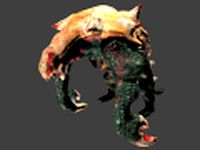
Juggernaut 3D Model
...uggernaut 3d model
3dexport
scary big monster horror massive juggernaut enemy creature
juggernaut 3d model ileon18 99015 3dexport
turbosquid
$19

M14 juggernaut
...uid
royalty free 3d model m14 juggernaut for download as fbx on turbosquid: 3d models for games, architecture, videos. (1537721)
turbosquid
$2
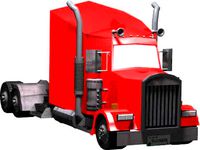
Juggernaut Truck
... available on turbo squid, the world's leading provider of digital 3d models for visualization, films, television, and games.
3d_export
$15
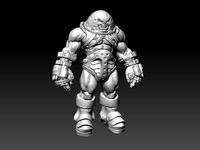
juggernaut zbrush sculpt
...juggernaut zbrush sculpt
3dexport
3d_export
$29
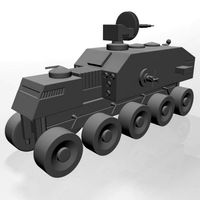
juggernaut 01
...& .obj. please rate, when you buy. thanks! :) also, please check out my other useful portfolio items that you may be missing!
turbosquid
$10
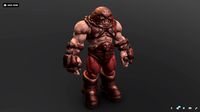
Juggerrnaut
...juggerrnaut turbosquid royalty free 3d model juggernaut for download as obj on turbosquid: 3d models for...
3d_export
$10

Call of Duty personnages 3D Model
...3dexport call of duty character 3ds c4d cinema 4d juggernaut shepherd ghost price call of duty personnages 3d model...
unrealengine
$10

Juggernaut
...
unreal engine marketplace
hello, introducing the character juggernaut. great for mass attack. a very good enemy for many games.
thingiverse
free

Juggernaut
...l nearby ships. within 1-3 km, the juggernaut can destroy entire battlecruisers, and all strike craft within 1-7km die instantly.
Houseboat
cg_studio
$80

Chinese Houseboat3d model
...seboat3d model
cgstudio
.max .obj - chinese houseboat 3d model, royalty free license available, instant download after purchase.
3d_export
$29
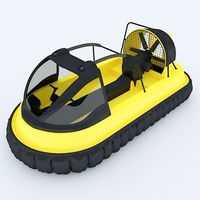
Speed Boat 3D Model
...speed boat 3d model 3dexport houseboat watercraft sea ocean river lake yacht luxury large cruise...
free3d
free

Houseboat v1
...houseboat v1
free3d
houseboat v1 printable, low poly model.
thingiverse
free

Fisher Price Houseboat table replacement by MindyLou
...fisher price houseboat table replacement by mindylou
thingiverse
set #985 houseboat table
thingiverse
free

houseboat "Philemon II" by Megafarm
... 1.0 you can see in the film and in the featured picture because there wasn´t time to print version 1.1. reasons see description.
thingiverse
free

Fisher Price Houseboat #985 cover replacement by MindyLou
...ering and spade. star may need minor sanding but should push fit into the space tightly and not need anything else to secure it.
thingiverse
free

First draft of a solar powered mini houseboat as a bicycle trailer by bikepocket
...3a/?coliid=i3euk3d2j1c6ch&colid=363mrc4v32xm5&psc=1&ref_=lv_ov_lig_dp_it
feedback geben
verlauf
gespeichert
community
thingiverse
free

Speed house by jarend01
...i decided to mix a speed boat with a houseboat because i just really wanted to see what that...
renderosity
$12

MS17 Swamp House Boat for Vue
...and duplicated to meet your vision of an old houseboat at the end of a pier and ready to...
grabcad
free

Houseboat
...houseboat
grabcad
my houseboat
Variable
design_connected
$11

Variable Balans
...variable balans
designconnected
varier furniture variable balans chairs computer generated 3d model. designed by peter opsvik.
3d_export
$10

variable speed bicycle
...variable speed bicycle
3dexport
variable speed bicycle
3d_export
$7

bombe c4 timer variable
...bombe c4 timer variable
3dexport
bombe c4 + timer variable + texture<br>obj . c4d . fbx . stl
cg_studio
$30

Variable depth sonar3d model
...cean sea vds rov
.3ds .c4d .obj - variable depth sonar 3d model, royalty free license available, instant download after purchase.
3d_export
$30
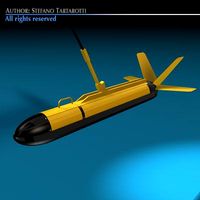
Variable depth sonar 3D Model
...ariable depth sonar hand-held hand held undersea submarine ocean sea vds rov
variable depth sonar 3d model tartino 11758 3dexport
turbosquid
$40

Variable Air Volume (VAV)
...y free 3d model variable air volume (vav) for download as max on turbosquid: 3d models for games, architecture, videos. (1270564)
turbosquid
$75

Variable Speed Mini Lathe
...l variable speed mini lathe for download as 3ds, max, and obj on turbosquid: 3d models for games, architecture, videos. (1297787)
3d_export
$85
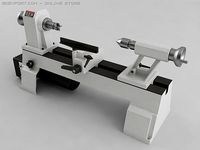
Variable Speed Mini Lathe 3D Model
...peed mini lathe woodworking metalworking wood metal vray machine shop
variable speed mini lathe 3d model plutonius 15624 3dexport
3d_export
$9

variable pitch conveyor
...any questions also you can email to me. designed with solidworks 2017, render with keyshot **************************************
cg_studio
$120

Variable Speed Mini Lathe3d model
...p tool
.3ds .max .obj .wrl - variable speed mini lathe 3d model, royalty free license available, instant download after purchase.
Draft
design_connected
$13

Draft
...draft
designconnected
parentesi quadra draft computer generated 3d model.
3d_ocean
$15

Drafting Table
...drafting table
3docean
architect architecture drafting equipment table
3d model of drafting table & it equipment…
turbosquid
$29
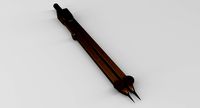
Drafting Compass
...d
royalty free 3d model drafting compass for download as c4d on turbosquid: 3d models for games, architecture, videos. (1248974)
turbosquid
$8
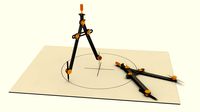
Drafting Compass
...ty free 3d model drafting compass for download as c4d and obj on turbosquid: 3d models for games, architecture, videos. (1704787)
turbosquid
$3

Drafting Chair
...free 3d model drafting chair for download as ma, obj, and fbx on turbosquid: 3d models for games, architecture, videos. (1569503)
turbosquid
$15

Drafting Stool
...d model drafting stool for download as max, max, obj, and fbx on turbosquid: 3d models for games, architecture, videos. (1516196)
turbosquid
$35

Drafting Lamp
... available on turbo squid, the world's leading provider of digital 3d models for visualization, films, television, and games.
turbosquid
$8

draft treasure
... available on turbo squid, the world's leading provider of digital 3d models for visualization, films, television, and games.
turbosquid
$1

Alien draft
... available on turbo squid, the world's leading provider of digital 3d models for visualization, films, television, and games.
3d_export
$140

drafting table 3D Model
...3dexport
drafting table draft drawing ruler tsquare desk protractor tools parallel bar
drafting table 3d model braz 5821 3dexport
Pre
3ddd
free
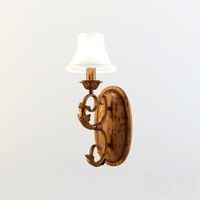
Savoy House / Navarra pre
...savoy house / navarra pre
3ddd
savoy house
бра savoy house navarra pre
turbosquid
$17

Pre-Columbian flyer
...d model pre-columbian flyer for download as 3ds, max, and obj on turbosquid: 3d models for games, architecture, videos. (1395279)
turbosquid
$5
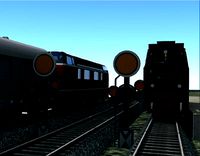
Railway pre-signal
... available on turbo squid, the world's leading provider of digital 3d models for visualization, films, television, and games.
turbosquid
$2

Pre-fab Bridge
... available on turbo squid, the world's leading provider of digital 3d models for visualization, films, television, and games.
3d_export
$50
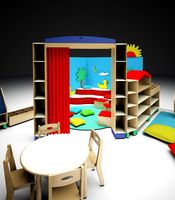
Pre school 3D Model
...pre school 3d model
3dexport
nursery play theatre shelving
pre school 3d model acquarius 38048 3dexport
cg_studio
$40

Palm Pre cellphone3d model
...del
cgstudio
.3ds .fbx .max .obj - palm pre cellphone 3d model, royalty free license available, instant download after purchase.
turbosquid
$5

Pre-engineered TerraPure Tank
...ee 3d model pre-engineered terrapure tank for download as dwg on turbosquid: 3d models for games, architecture, videos. (1286967)
turbosquid
$30

coffee shop pre vis
... available on turbo squid, the world's leading provider of digital 3d models for visualization, films, television, and games.
turbosquid
$8

Proraso pre-shave cream
...pre-shave cream for download as blend, obj, dae, stl, and fbx on turbosquid: 3d models for games, architecture, videos. (1616339)
turbosquid
$50

Emotiva RSP-2 Stereo Pre-amp
... available on turbo squid, the world's leading provider of digital 3d models for visualization, films, television, and games.
Cast
3ddd
free

Sebastian Cast
...sebastian cast
3ddd
sebastian cast
карикатуры от себастьяна каста
3ddd
$1
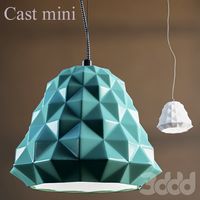
Cast mini
...cast mini
3ddd
present time
подвесной светильник cast mini
материал: керамика
размер: 20x166
производитель: present time
turbosquid
$19

Cast Iron
...rbosquid
royalty free 3d model cast iron for download as max on turbosquid: 3d models for games, architecture, videos. (1609108)
3d_export
$6

Design of die casting machine
...design of die casting machine
3dexport
design of die casting machine
3ddd
$1
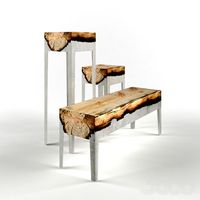
Wood Casting by Hilla Shamia
...wood casting by hilla shamia
3ddd
wood casting by hilla shamia
turbosquid
$30
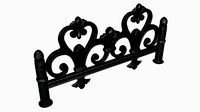
Cast iron fenceClassic
...alty free 3d model cast iron fenceclassic for download as max on turbosquid: 3d models for games, architecture, videos. (1630755)
turbosquid
$15
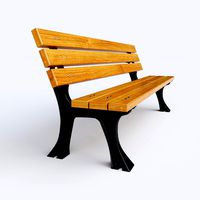
Cast-iron bench
...id
royalty free 3d model cast-iron bench for download as max on turbosquid: 3d models for games, architecture, videos. (1239993)
turbosquid
$15
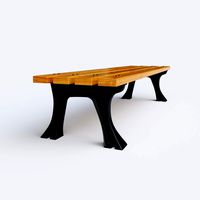
Cast-iron bench
...id
royalty free 3d model cast-iron bench for download as max on turbosquid: 3d models for games, architecture, videos. (1239991)
turbosquid
$13

Ring with 2 casts
...
royalty free 3d model ring with 2 casts for download as 3dm on turbosquid: 3d models for games, architecture, videos. (1375610)
turbosquid
free

Caste Room with pillars
... 3d model caste room with pillars for download as xsi and fbx on turbosquid: 3d models for games, architecture, videos. (1305991)
Extreme
3d_export
$10

extreme thriller
...extreme thriller
3dexport
australia's #1 favorite ride... the extreme thriller
turbosquid
$1

Skewb Extreme
...quid
royalty free 3d model skewb extreme for download as max on turbosquid: 3d models for games, architecture, videos. (1699716)
turbosquid
$45

Apple Airport Extreme
...model apple airport extreme for download as 3ds, max, and obj on turbosquid: 3d models for games, architecture, videos. (1299458)
3d_export
$24

Suzuki Samurai Extreme Ofrroad
...suzuki samurai extreme ofrroad
3dexport
modified indian suzuki samurai extreme offroad capability
turbosquid
$49

Extreme Ops Knife
... available on turbo squid, the world's leading provider of digital 3d models for visualization, films, television, and games.
turbosquid
$49

Teti Extreme Loudspeaker
... available on turbo squid, the world's leading provider of digital 3d models for visualization, films, television, and games.
turbosquid
$6

Voice Extreme X5
... available on turbo squid, the world's leading provider of digital 3d models for visualization, films, television, and games.
turbosquid
free

Extreme Dragster Car
... available on turbo squid, the world's leading provider of digital 3d models for visualization, films, television, and games.
turbosquid
$3
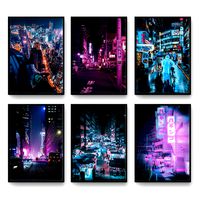
Paintings Collection EXTREME NEON
...ngs collection extreme neon for download as max, c4d, and fbx on turbosquid: 3d models for games, architecture, videos. (1439544)
turbosquid
$10

Razer Lachesis Extreme Edition
... available on turbo squid, the world's leading provider of digital 3d models for visualization, films, television, and games.
Modular
3ddd
$1

MODULAR
...modular
3ddd
modular , врезной свет
modular потолочные светильники
3ddd
$1
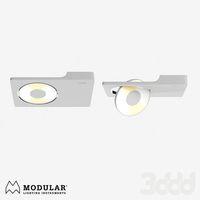
Modular Spock
...modular spock
3ddd
modular
modular spock
3ddd
$1
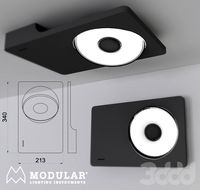
MODULAR / Spock
...modular / spock
3ddd
modular
modular/spock
design_connected
$7
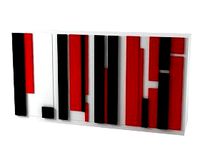
Modular
...modular
designconnected
emmemobili modular shelves and storage computer generated 3d model. designed by ferruccio laviani.
3ddd
$1
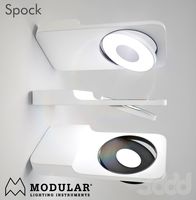
Modular spock
...modular spock
3ddd
modular
spock wall led
turbosquid
$25

Modular sofa Angelo Cappellini Modular
...a angelo cappellini modular for download as max, fbx, and obj on turbosquid: 3d models for games, architecture, videos. (1570923)
turbosquid
$15

Modular sofa Angelo Cappellini Modular
...a angelo cappellini modular for download as max, fbx, and obj on turbosquid: 3d models for games, architecture, videos. (1570304)
3ddd
$1
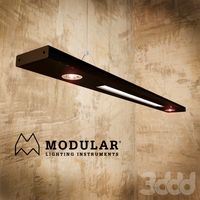
Modular 2FLAT2C
...modular 2flat2c
3ddd
modular
modularhttp://www.supermodular.com/
3d_export
free
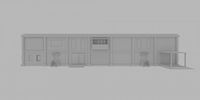
Modular walls
...modular walls
3dexport
modular walls for playing without materials and textures
3ddd
$1

Modular / Lighting Juliette
...modular / lighting juliette
3ddd
modular
modular lighting juliette
